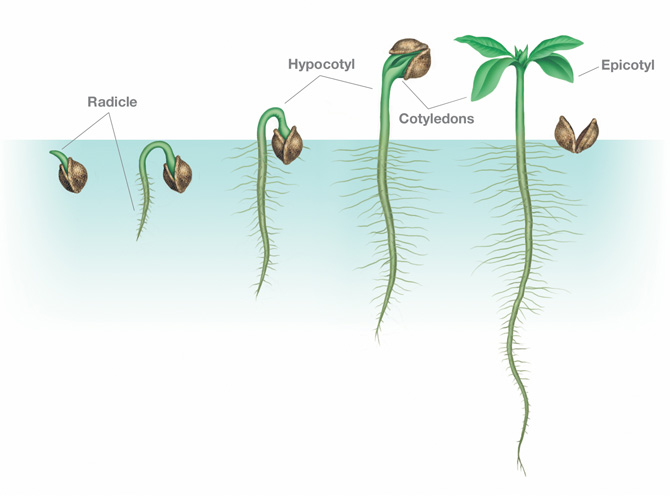
 |
|
Hydroponics - Indoor HorticultureHydroponics - Indoor Horticulture represents an educational, in-depth,
up-to-date,
indoor horticultural growers guide that covers all principles of indoor Hydroponics - Indoor Horticulture examines, explores, dissects and
presents a fully comprehensive step by step growers guide, relating
to all and every aspect of indoor hydroponic horticulture, with complete
chapters on plant biology, propagation, hydroponic systems, nutrients,
oxygen, carbon dioxide enrichment, pH, biological pest control, fungi/disease,
cuttings/clones, pruning/training, breeding, harvesting, equipment,
grow rooms, a full history of hydroponics, and more. |
(Below follows a one page sample taken from the
book)SeedlingsThe anatomy of a seed can be likened to an egg or even an embryo. The seed has built into it the genetic programming and genes of its parents.Inside the seed, nearing the centre, are the primary leaves. Working out from the centre you have the cotyledons, then the radicle and nearing the top, the root cap. These are the four elements within the seed that create life. Original genus seeds are seeds obtained from parents that have never been crossed. These are also known as pure genetic strains, normally imported in from countries that have been growing the same species of plant for hundreds, or thousands of years, and longer. |
F1 seeds are crossed varieties that have been stabilised. The stabilisation occurs due to a breeding program subjected on the parents over many generations. These are the most favoured seeds as the F1s have the benefits of each of the new strains bred into the seed, i.e. vigour, flavour, growth rate, so on and so forth. F2, F3 and F4 are less stable. F2s are obtained by fertilising F1s and the offspring become F2s resulting in less stable seeds, reverting back to the differing parentage that went into the making of the F1s. The same applies when reproducing from F2 or F3 seeds in that the end result will be that the original seed stock that the parents came from was a complete mix which many F1s are, and most probably would result in getting ten completely differing varieties from ten identical seeds. Sometimes this can be a blessing and sometimes not. |

| Example of a Seed Germinating |
|
 |